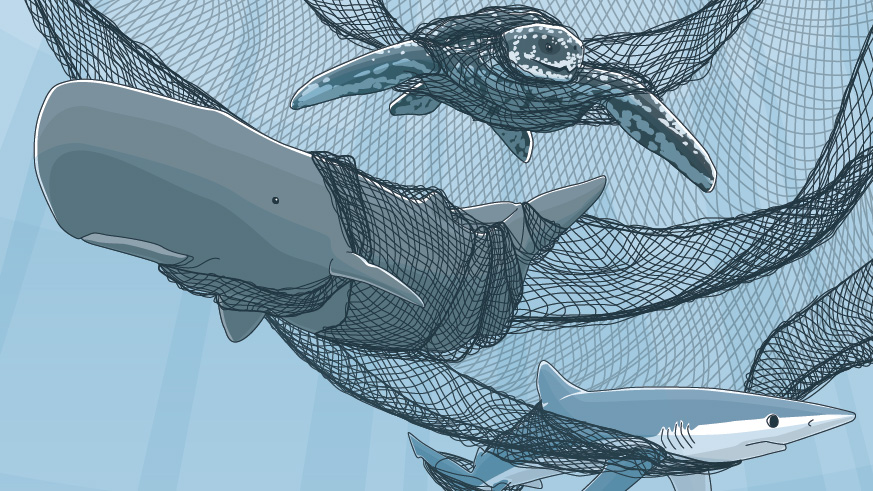Let’s Phase Out Drift Gillnets to Catch West Coast Swordfish

In September, West Coast fishery managers set strict limits on how many marine mammals and turtles can be killed incidentally (called bycatch) in drift gillnets targeting swordfish. They also committed to monitoring all fishing trips deploying this gear by 2018, by utilizing federally certified onboard observers or cameras. These were tough decisions for fishery managers but a step in the right direction toward transitioning away from this indiscriminant fishing method.
In November, regional fishery management leaders will begin a broader discussion on the future of catching swordfish along the West Coast. The Pacific Fishery Management Council’s September bycatch limits, known as hard caps, are a good interim step; however, we need to transition away from drift gillnets to catch swordfish over the long term.
Concerns about the indiscriminate nature of drift gillnets aren’t new or unique to catching swordfish on the West Coast. Drift gillnets on the high seas have drawn criticism for years, resulting in a U.N. ban on large-scale driftnet fisheries in 1991. The European Union banned the use of drift gillnets of any size to catch swordfish and other large surface-dwelling fish in 2002. Russia recently banned large-scale drift gillnets primarily targeting salmon, and Pope Francis criticized fishing methods that “discard much of what they collect” in his recent encyclical on the environment.
Bringing the conversation back to our own region, advocates have been trying to reform this fishery for years, and with good reason. Even though only about 20 California-based boats are actively engaged in this fishery, it kills more dolphins, porpoises, and whales than all other fisheries on the West Coast and Alaska combined.
With this kind of record, we should phase out this destructive fishing gear on the West Coast and provide fishermen with a viable alternative.
Read our full letter to the Pacific Fishery Management Council.
Fortunately, a new, more-selective option is being tested off the California coast with consistently positive results. Deep-set buoy gear effectively targets swordfish while minimizing the needless waste of other marine life. Although fishermen keep only 35 percent of the animals caught in drift gillnets—the rest are discarded overboard—94 percent of the catch from deep-set buoy gear can be kept and sold by fishermen.
That’s why it is critical that the Pacific Fishery Management Council prioritize deep-set buoy gear as an allowable method of fishing for swordfish on the West Coast.
Unfortunately, some members of the council disagree: They would rather support allowing fishing vessels to deploy shallow-set longlines, which employ hundreds or thousands of hooks stretching as far as 60 miles, just outside of the U.S. exclusive economic zone. This form of fishing is also notoriously wasteful. Swordfish account for only 43 percent of the total catch of the Hawaii longline fleet. Among the bycatch, hooks from longlines catch more than 30 endangered turtles each year. Between 2004 and 2014, these longlines also caught more than 5,000 striped marlin, a valuable game fish. Replacing one wasteful approach with another is not a solution, especially when there’s a better way to catch swordfish.
In November the Pacific Fishery Management Council will have an opportunity to lay out a management plan that promotes deep-set buoy gear as a more-selective method for catching swordfish—one that would provide the fish, locally caught, while also leaving other animals in the water where they belong. It’s time for our regional fishery managers to start the transition away from drift gillnets.
Paul Shively directs ocean conservation efforts along the West Coast for The Pew Charitable Trusts.






